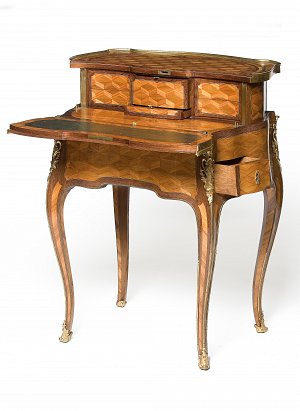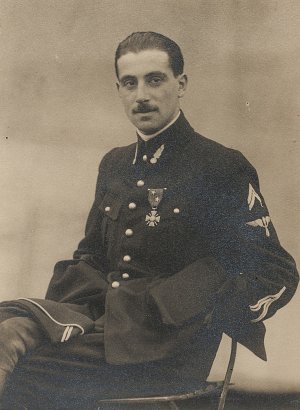An exceptional collection of art objects

Roger Vandercruse (known as Lacroix) (1728-1799), Mechanical desk, c. 1760
Bâti en chêne et noyer ; placage d’amarante, de houx, de bois de rose et de satiné ; bronze ciselé et doré. Inv. CAM 345
© Les Arts Décoratifs / photo : Jean Tholance
Antique woodwork serves as a backdrop to furniture by cabinetmarket and joiners working for the Garde Meuble Royal (Royal Furniture Repository) surch as Oeben, Riesener and Jacob. Gilt bronze Clocks and wall clocks, barometers and chandeliers, mounted vases adorn cabinets and boiseries. Two particularly spectacular masterpieces of tableware: the Orloff silver dinner service commissionned by Catherine II of Russia from the silversmith Roettiers in 1770, and the so-called “Buffon” porcelain services, made at Sèvres in the 1780s and fituring a bird decor. Sculptures and paintings also reflect the collector’s sensibilities, with busts by Houdon, portraits by Elmisabeth Vigée Lebrun, landscapes by Guardi and hunting scenes by Oudry.
A family’s tragic destiny

Lieutenant Nissim de Camondo
© MAD, Paris
Comte Moïse de Camondo was born in Istanbul in 1860 into a Sepharadic Jewish family that owned one of the largest banks in the Ottoman Empire, established in France since 1869. Moïse de camondo meant to give his mansion and collection to his son Nissim. But World War I broke out, and Nissim was killed in an air battle iun 1917. After this tragic loss, he decided to bedqueath his property to the “Arts Décoratifs”, in memory of his son. The museum opened the year after Moïse de Camondo died, in 1935. During World War II, his daughter, Béatrice, his son-of-law Léon Reinach and their children, Fanny and Bertrand, died in the nazi camps. The Camondo family died out.